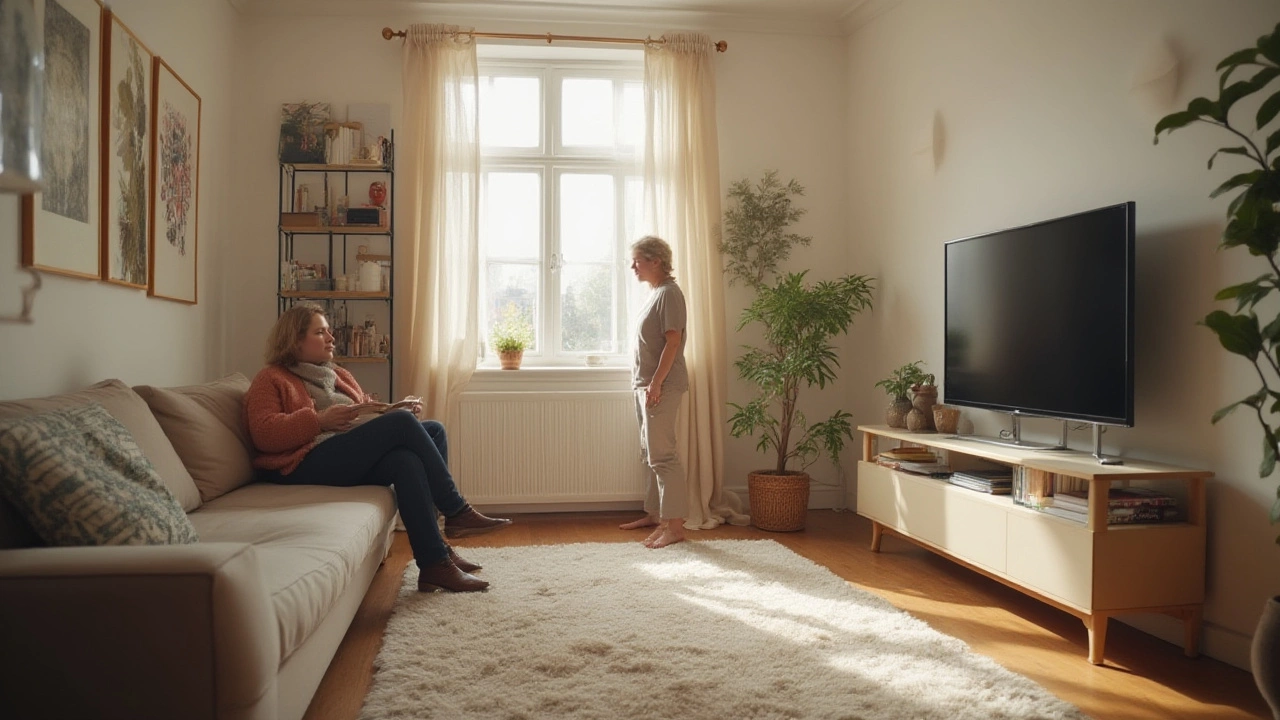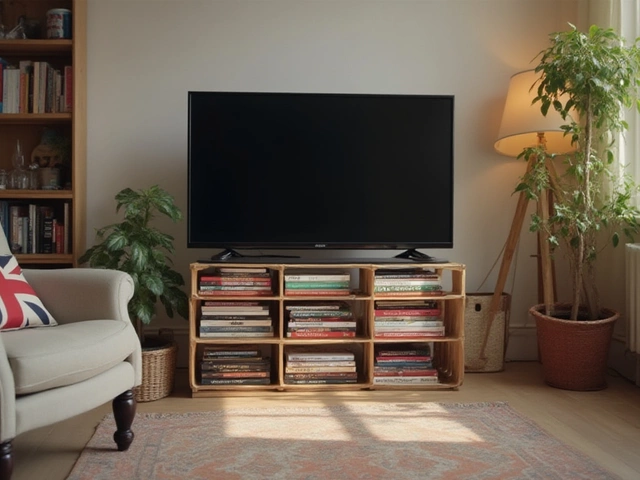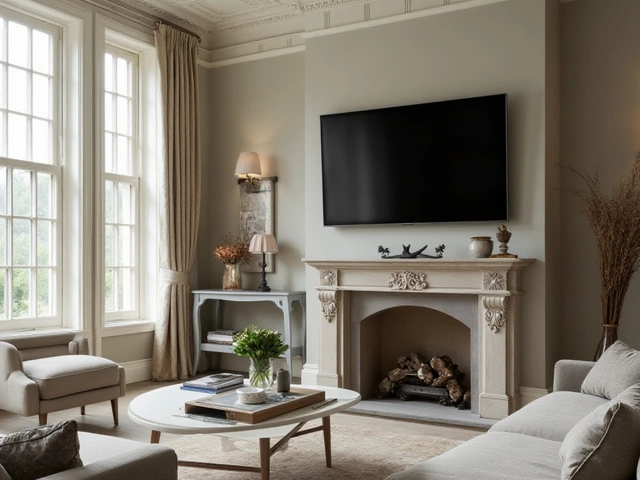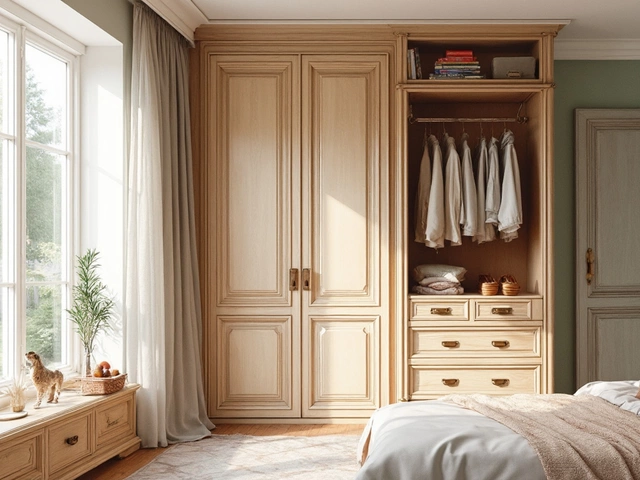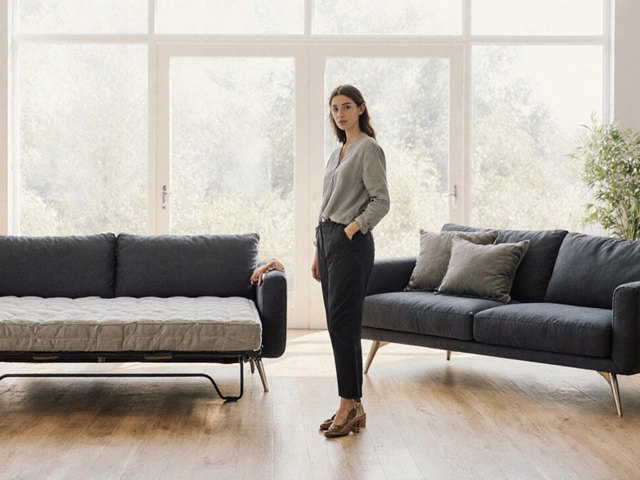Ever got that aching neck after binge-watching your favorite series? Or found yourself squinting to see the TV over a stack of furniture? Surprisingly, the height of your TV stand is the sneaky culprit behind both those headaches and a perfectly smooth viewing experience. People get heated in debates over low vs. high TV stands, and for good reason—the right choice isn’t just about looks. It's about ergonomics, room layout, screen size, and even avoiding headaches (literally). So, why does TV stand height matter way more than we thought?
How TV Stand Height Impacts Your Viewing Comfort
Think about how often you watch TV—game nights, movie marathons, daily news, or just background noise while baking. If your TV’s too high or too low, it messes with your comfort fast. According to guidelines from ergonomic home design experts, your eyes should land right about one-third from the top of the screen when you’re sitting down. Stand up. Sit. Picture where your eyes hit your wall—most likely, you’re not staring upward like at the cinema. That’s the secret to pain-free viewing: your sightline wants that middle-ish spot on your TV.
If your TV stand is too low, you’ll end up tilting your head downward. Doesn’t sound too bad? Try it for an hour, and your neck will start to complain. On the flip side, a high stand brings that awkward cinema effect—remember those neck cramps sitting in the front row? No thanks.
This isn’t just comfort drama. The American Optometric Association says you should keep the center of your TV screen at eye level (give or take 5-15 degrees down is okay), especially with bigger screens. For most sofas, that sweet spot is about 42 inches from the floor to the screen center, but—and it’s a big but—couch heights and personal preferences throw a wrench in rule-making. Play around with pillows and stacks of books to simulate different TV heights.
And the numbers? Here’s a quick data comparison to help you find that Goldilocks zone for your main TV:
| Screen Size | Recommended Height (Floor to screen center) |
|---|---|
| 42-inch | ~ 56 cm / 22 inches |
| 55-inch | ~ 64 cm / 25 inches |
| 65-inch | ~ 71 cm / 28 inches |
Of course, that’s the center of your screen. Add on the stand and any décor, and you’ll start to see whether low or high makes sense for your living room layout. The bottom line—don’t just grab any TV furniture. Match it to your comfort and relax in style.
Room Layout and Space: How Size Dictates Stand Choice
Now, it’s not just about your eyeballs. The room’s setup plays a huge role. Got a big open-plan living area or a cozy nook under your stairs? Each type of space comes with its own TV stand quirks. A low TV stand (usually 14-22 inches tall) tends to fit best in more modern or minimalist rooms, keeping things sleek, with the TV as part of the landscape instead of a towering centerpiece. High TV stands (typically 23-30 inches or more) can stand out as a focal point—sometimes literally—especially in traditional or multi-use rooms where the TV needs to double as a divider or share space with other tall furniture like bookshelves.
Ever had to crane your neck to see over a coffee table, soundbar, or the dog’s favorite spot on the rug? That’s where stand height makes daily life easier or harder. Low stands keep everything at seat level, which works wonders if your living room’s all about lounging, bean bags, or floor cushions. But if you’re in a home with lots of high-backed armchairs and taller couches, that low-slung look can backfire—suddenly you’re peeking over the edge instead of sitting back.
There’s also the matter of storage. Low stands usually mean more horizontal storage—great for wide electronics, baskets, and maybe that vinyl collection you've started. High stands often offer vertical storage and sometimes even a little extra shelving for books, picture frames, and plants. It’s not just a style choice; it’s a functional decision about where your stuff actually fits.
And you can spot trends across countries too. In the US and Northern Europe, low, TV-console-inspired designs dominate modern apartments because small spaces eat up vertical space fast. In older homes or spaces with more square footage, taller stands creep back into fashion because fire places, molding, and other high architectural features make more sense for a raised setup.

The Impact on Style: Modern Minimalism vs. Classic Comfort
The height of your TV stand sends a message about your taste and the vibe you want. Low TV stands ooze modern, minimalist confidence—they make your living room feel open and uncongested, especially paired with a sleek wall-mounted screen. You’ll see them in just about every Instagram-worthy Scandinavian design shot, paired with white oak or matte black finishes and pops of accent color on the wall behind.
High TV stands go the classic route, working especially well if you want the TV to play nice with art, cabinets, or even as part of a gallery wall. They’re often chunkier and more ornate, sometimes matching with bookcases or even a full wall unit. If you love the kind of décor where each piece has a presence and history, a high stand fits right in. In more traditional family rooms, you’ll even see shelves for board games, record players, and that mystery cable basket we all have.
The design industry gives a tip to make this choice easier: match your stand height to your TV size and wall height. For high ceilings, high stands keep things balanced and help fill vertical space. For roomier, low-ceilinged apartments, a low stand stops your setup from feeling cramped or off-balance. Don’t forget, you can always hack the look with wall-mount brackets that let you set the height freely—sometimes the best solution isn’t “either/or”.
Material choices can help blend the stand with your vibe too. Metals, glass, and modular designs with hidden wheels keep a low stand visually light, almost floating. Meanwhile, chunky wood and bold color let a high stand make a statement. Remember that a TV stands design is as much about function as it is about showing off your personality.
Functionality that Matters: Storage, Kids, and Cables
Anybody with toddlers or curious pets knows one thing: out of reach is the best kind of safe. High stands can be a game changer in homes where sticky fingers explore every corner. If your little ones are mastering the art of unplugging the Blu-ray player, a higher TV setup buys peace of mind. On the other hand, low stands mean a safer setup if you’re worried about big TVs tipping over—especially since the base is closer to the floor, lowering the center of gravity.
Low stands make gaming consoles, DVDs, or that legendary stack of remotes super easy to reach. You can stow gadgets in drawers or shelves, and never have to do calisthenics to find the right HDMI cable. But with limited vertical space, sometimes things look cluttered fast unless you become a storage ninja with baskets and cable management tricks.
High stands lend themselves better to maximize storage vertically; think of doors that hide away board games, tall media towers, or spaces for extra speakers. Cleaning under a high stand is easier too (bonus points for anyone with a robot vacuum), but they’re trickier if you want to hide cables. With a low stand, it’s pretty easy to snake cords along the wall or baseboard, while high stands tend to dangle them at eye level if you’re not careful.
Don’t forget to look for features that match your home’s vibe: do you want glass doors to keep dust away but still stun with a display, or are you a “shut it and forget it” type? Pull-out baskets, cord grommets, and sliding doors are tiny details that can make a store-bought stand look custom. And, if you’re up for a weekend project, you can adjust the legs on many stands to tweak the height slightly—or use rubber stoppers to keep pets and curious kids safe.
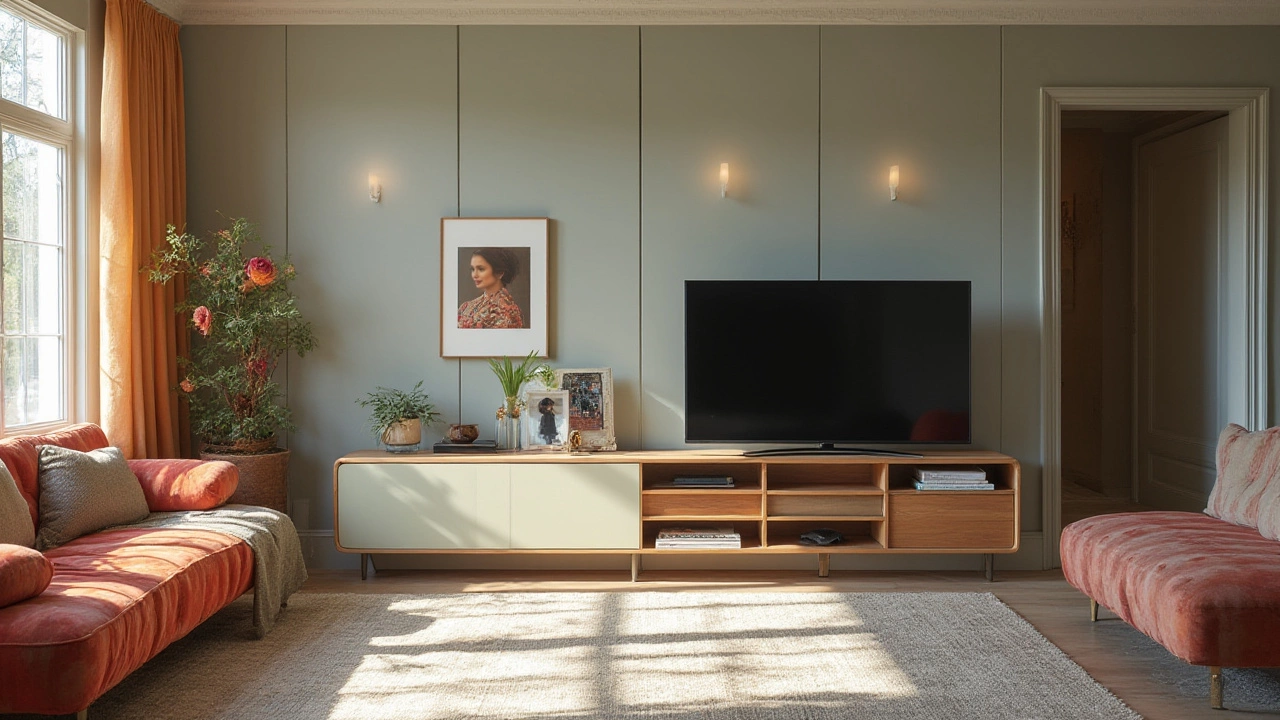
Making the Right Choice: Tips for Picking Your Perfect TV Stand Height
Lots of us get paralyzed when faced with rows of TV stands at a furniture store. Here’s a simple step-by-step to finding your ‘just right’ fit—no regrets later, no cricks in your neck:
- Measure your sofa or the spot where you watch most—the seat height is your starting point. Most are about 18-20 inches, but yours could be taller or shorter.
- Sit down with a friend holding a tape measure at different eye levels on the wall. Where your eyes land naturally is the sweet spot for the screen center.
- Set your TV mockup in place. Use boxes or temporary stands to simulate the height, then settle in for a 20-minute episode. Adjust until it feels effortless to look straight ahead.
- Think honestly about your room’s storage needs. If you like things tidy and have lots of gadgets, taller stands with doors may suit you better. Minimalist? Go for low and sleek, tuck cables out of sight.
- Consider safety. Got kids or large pets? A lower, wider stand is less likely to tip but a higher stand gets the TV out of reach. Add furniture straps if you’re nervous about heavy sets.
- Work with what you already have. Sometimes raising or lowering your TV by just a couple of inches with risers, wall brackets, or even casters on old furniture is all you need to get to the ideal height. No need to buy all new if you can DIY.
I’ve lived with both high and low setups—and sometimes, just sliding a bolster cushion behind my back changes everything. Your perfect setup might surprise you the first time you test it. Adjust, tweak, and don’t be afraid to break ‘design rules’ if your neck, eyes, and family say otherwise.
